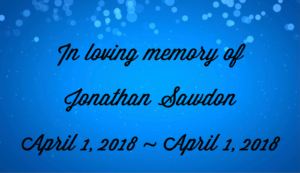Caryn

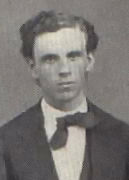 There are wars between nations, and then there are wars between gangs. The Lincoln County War of 1878 was the latter. The war started when John Tunstall was murdered. John Tunstall’s murder was really the culmination of the ongoing conflict between two factions who were competing for profits from dry goods and cattle interests in the county. James Dolan dominated the older and more established faction, operating a dry goods monopoly through general store referred to locally as The House. The other faction was run by English-born John Tunstall and his business partner Alexander McSween, who opened a competing store in 1876, with backing from established cattleman John Chisum. The Tunstall-McSween faction gathered lawmen, businessmen, Tunstall’s ranch hands, and criminal gangs to their assistance. The Dolan faction was allied with Lincoln County Sheriff Brady and aided by the Jesse Evans Gang. The Tunstall-McSween faction organized a posse of armed men, known as the Lincoln County Regulators, and had their own lawmen consisting of town constable Richard M Brewer and Deputy US Marshal Robert A Widenmann.
There are wars between nations, and then there are wars between gangs. The Lincoln County War of 1878 was the latter. The war started when John Tunstall was murdered. John Tunstall’s murder was really the culmination of the ongoing conflict between two factions who were competing for profits from dry goods and cattle interests in the county. James Dolan dominated the older and more established faction, operating a dry goods monopoly through general store referred to locally as The House. The other faction was run by English-born John Tunstall and his business partner Alexander McSween, who opened a competing store in 1876, with backing from established cattleman John Chisum. The Tunstall-McSween faction gathered lawmen, businessmen, Tunstall’s ranch hands, and criminal gangs to their assistance. The Dolan faction was allied with Lincoln County Sheriff Brady and aided by the Jesse Evans Gang. The Tunstall-McSween faction organized a posse of armed men, known as the Lincoln County Regulators, and had their own lawmen consisting of town constable Richard M Brewer and Deputy US Marshal Robert A Widenmann.
The highly volatile situation came to a head on April 4, 1878, in what became known as The Gunfight at Blazer’s Mill. The shootout was between the Lincoln County Regulators and buffalo hunter Buckshot Roberts. The Regulators, led by Richard “Dick” Brewer, included Billy the Kid and Charlie Bowdre. They began the process of hunting down anyone believed to have been associated with the murder of John Tunstall, which had initially sparked the Lincoln County War. Still, the conflict had been long in the making. Roberts had already been implicated in crimes associated with the “Murphy-Dolan” faction. Nevertheless, the reality is that he probably had nothing to do with the ongoing range war.
Blazer’s Mill located on a hillside between Lincoln, New Mexico and Tularosa, was owned by a dentist named Dr Joseph H Blazer. It was more than just a mill. The property included a large two-story house, a large square office building, a sawmill, a grist mill, several one-story adobe structures and houses, a post office, a general store, and a number of corrals and barns. I suppose it was rather a local hang out. The Regulators had killed Sheriff Brady and Deputy Hindman three days earlier, and they were in Blazer’s Mill to have a good meal at Mrs Godfrey’s Restaurant. The Regulators, who were there that day included Brewer, Bowdre, William McCarty (aka Billy the Kid), Doc Scurlock, Frank McNab, George Coe, Frank Coe, John Middleton, Jim French, Henry Newton Brown, Fred Waite, and several others who were not as well-known.
Not everyone was ready for this war. In fact, Buckshot Roberts wanted no part of the Lincoln County War. He had even made plans to leave the area. He sold his ranch and was just waiting for the check from his buyer. On April 4th, 1878, Roberts rode his mule into Blazer’s Mills. He was there to collect his check, but he was shocked to discover that the Regulators entire upper echelon was there, eating lunch in a nearby building. After killing Sheriff Brady just three days earlier the men had left the area around Lincoln, New Mexico after killing Sheriff Brady just three days earlier, but had brazenly stopped to have dinner at Mrs Godfrey’s Restaurant, before leaving the area. One of the Regulators…Frank Coe, was sitting with “Buckshot” Roberts on the steps of the main house. Coe was trying to talk Roberts into turning himself in. Roberts refused. He figured that if he turned himself in, he would be killed by the cowboys, out for revenge.
Meanwhile, Regulator chief, Dick Brewer was growing very impatient with the stand-off, so he He had given him a chance to surrender, and now he was done waiting. When Roberts saw the armed cowboys coming for him, he jumped up with his Winchester ready to fire. Roberts and Charlie Bowdre fired at the same time. Bowdre hit Roberts in the stomach and Roberts’ shot hit Bowdre’s belt buckle, actually severing his gun belt and knocking the wind from him. Roberts was seriously wounded but kept pumping bullets at the Regulators as he headed to the doorway. In the shootout, John Middleton was seriously wounded in the chest. Doc Scurlock was grazed by one slug and another struck George Coe in the right hand, costing him his trigger finger. Finally, when Roberts’ rifle clicked, Billy the Kid knew it was empty, so he ran from cover to finish off the Roberts, but instead, he was knocked senseless by the barrel of Roberts’ Winchester.
By this time, Roberts was desperate, so he barricaded himself in the house. He ignored both his painful wound and the Regulators’ repeated gunshots, armed himself with a single-shot .50-70 Government Springfield rifle belonging to Blazer, thought to be a Sharps rifle which belonged to Dr Appel and readied himself for the next round. The Regulators were stunned by everything that had taken place. They didn’t expect this turn of events, 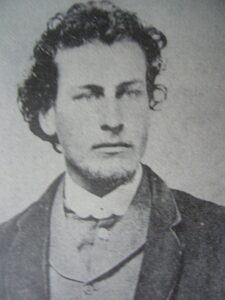
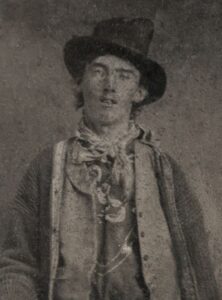 and they could only tend to their wounded and keep trying to get Roberts to come out. Nevertheless, none of them dared to approach their enemy’s fortress. Finally, Brewer circled around the main house, and took cover behind some stacked logs and opened fire on the room where the wounded man was laying on a mattress in front of the barricaded doorway. Roberts saw a cloud of gun smoke from the log pile. He opened fire when Brewer put his head up again, striking the cowboy in the eye. The Regulators, finally admitted defeat, pulled out, and left the area. Buckshot Roberts died from his wounds the next day. In the end, Roberts and Dick Brewer were buried side by side near the big house where the gunfight occurred. George W Coe, who survived the Blazer’s Mill fight, died in 1934.
and they could only tend to their wounded and keep trying to get Roberts to come out. Nevertheless, none of them dared to approach their enemy’s fortress. Finally, Brewer circled around the main house, and took cover behind some stacked logs and opened fire on the room where the wounded man was laying on a mattress in front of the barricaded doorway. Roberts saw a cloud of gun smoke from the log pile. He opened fire when Brewer put his head up again, striking the cowboy in the eye. The Regulators, finally admitted defeat, pulled out, and left the area. Buckshot Roberts died from his wounds the next day. In the end, Roberts and Dick Brewer were buried side by side near the big house where the gunfight occurred. George W Coe, who survived the Blazer’s Mill fight, died in 1934.
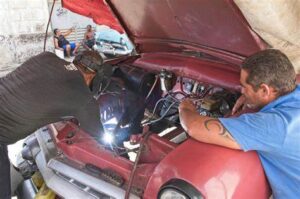
 Cars are an important part of life these days, and really for many years now. So, what would you do if your ability to buy a car suddenly stopped…like hitting a wall? My guess is that you would start taking really good care of the car you had, because you wouldn’t know how long it would be before you could buy another car. Following the Cuban Revolution in 1959, Fidel Castro imposed a ban on the import of cars from abroad. This made it almost impossible for Cubans to get their hands on new cars, meaning that if they wanted a car, they had to make do and mend the vehicles that were already on the island. Basically, the Cuban people became a nation of mechanics. It was a necessity if they wanted to have a car.
Cars are an important part of life these days, and really for many years now. So, what would you do if your ability to buy a car suddenly stopped…like hitting a wall? My guess is that you would start taking really good care of the car you had, because you wouldn’t know how long it would be before you could buy another car. Following the Cuban Revolution in 1959, Fidel Castro imposed a ban on the import of cars from abroad. This made it almost impossible for Cubans to get their hands on new cars, meaning that if they wanted a car, they had to make do and mend the vehicles that were already on the island. Basically, the Cuban people became a nation of mechanics. It was a necessity if they wanted to have a car.
In a way I find it almost strange that Castro didn’t take away the cars they had, but I guess he wasn’t concerned about them driving, just that he didn’t want any imports from the United States. The problem was 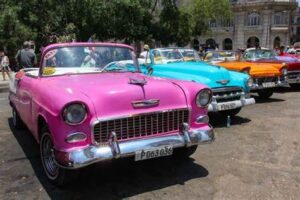
 that there are no car manufacturers in Cuba, so the only way to buy a car was to import it. Of course, Castro and any of his chosen people could still import vehicles, just not from the United States. These kinds of things happen between governments, and as usual, it’s the people who suffer, not the government. In this case, I’m not so sure that “suffer” is the right word. Cuba has a huge collection of classic cars, because the people became, not only great mechanics, but they also became experts at restoring and caring for classic cars.
that there are no car manufacturers in Cuba, so the only way to buy a car was to import it. Of course, Castro and any of his chosen people could still import vehicles, just not from the United States. These kinds of things happen between governments, and as usual, it’s the people who suffer, not the government. In this case, I’m not so sure that “suffer” is the right word. Cuba has a huge collection of classic cars, because the people became, not only great mechanics, but they also became experts at restoring and caring for classic cars.
In 2014, after 55 years of not being able to, Cubans these days, are free to import foreign cars again. Unfortunately, the cost is so high that it makes imports impossible for all but the wealthiest members of society. Now you will see some newer cars on the roads, but they tend to be owned by taxi companies or car hire firms. 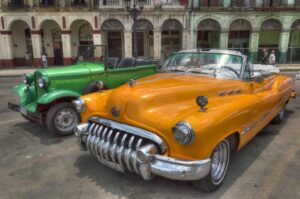
 The general population continues to drive to the old classics that they have driven for the last 55 years. While the cars in Cuba are all old, they do have value. All classic cars do, but those that are as well preserved as the ones in Cuba, might just have more value than their owners really know about…on the open market anyway. Whether they will ever be placed on the open market or not is a different story.
The general population continues to drive to the old classics that they have driven for the last 55 years. While the cars in Cuba are all old, they do have value. All classic cars do, but those that are as well preserved as the ones in Cuba, might just have more value than their owners really know about…on the open market anyway. Whether they will ever be placed on the open market or not is a different story.
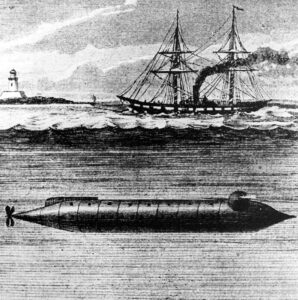 I am of the opinion that most of the United States is populated by good people, who are trying to lead decent and respectful lives. I’m sure there are those who would disagree, and when faced with evil doers, it is sometimes hard to see the good because of the bad, but I think we can agree that the people who agreed with the northern states during the Civil War, far outnumbered those who agreed with the southern states. the Union had a distinctive advantage over the Confederates. There were more states and more soldiers in the Union Army. So, the Confederate Army had to find a way to get ahead of their enemies. Confederates sometimes relied on technical innovation to aid their cause, in the face of such limited resources compared with the Union Army’s sheer numbers and resources. The Union had $234,000,000 in bank deposit and coined money while the Confederacy had $74,000,000 and the Border States had $29,000,000. The Union Army had 2,672,341 soldiers, as opposed to the Confederate Army, which had between 750,000 to 1,227,890 soldiers.
I am of the opinion that most of the United States is populated by good people, who are trying to lead decent and respectful lives. I’m sure there are those who would disagree, and when faced with evil doers, it is sometimes hard to see the good because of the bad, but I think we can agree that the people who agreed with the northern states during the Civil War, far outnumbered those who agreed with the southern states. the Union had a distinctive advantage over the Confederates. There were more states and more soldiers in the Union Army. So, the Confederate Army had to find a way to get ahead of their enemies. Confederates sometimes relied on technical innovation to aid their cause, in the face of such limited resources compared with the Union Army’s sheer numbers and resources. The Union had $234,000,000 in bank deposit and coined money while the Confederacy had $74,000,000 and the Border States had $29,000,000. The Union Army had 2,672,341 soldiers, as opposed to the Confederate Army, which had between 750,000 to 1,227,890 soldiers.
Given the obvious lop-sidedness, especially in the naval conflict, the Confederates could not hope to match the Union in sheer tonnage of ships produced. They didn’t have the funds or the resources to build as many ships as the Union. Many people would actually assume that either the Confederates would lose the war quickly, or it would be mostly fought on land. The Confederates, however, did come up with two famous Confederate naval  innovations…the ironclad warship, CSS Virginia and the submarine, HL Hunley. The HL Hunley was built in 1863. Who would have thought there would be a submarine built that early on.
innovations…the ironclad warship, CSS Virginia and the submarine, HL Hunley. The HL Hunley was built in 1863. Who would have thought there would be a submarine built that early on.
Of course, the Union wasn’t sitting around doing nothing while the Confederates dominated the water. They were busy too. The USS Monitor was built around the same time the Virginia was being retrofitted with iron plating, and those two ships actually clashed at the Battle of Hampton Roads. While the Confederates did get in the war ship game, the superior Northern industrial capacity allowed them to build more than 80 ironclads. The North also built a submarine, called the USS Alligator. It was designed by French engineer Brutus de Villeroi, who had, amazingly, been working on submersible craft for some 30 years. Contrary to what we might think, the concept of a submarine was not a new one. In fact, there was even a primitive one employed in the American War of Independence. The submarines were a far cry from the huge 20th-century submarines of today.
The Alligator was based on an 1859 prototype and was commissioned in 1861 as part of the same flurry of  naval innovation that saw the creation of the ironclad Monitor. The Alligator featured an innovative air-purification system that used limewater to remove carbon dioxide and keep the air breathable for long periods. The Alligator was manned by a 16-member crew, which was later reduced to eight. Also unusual is the fact that USS Alligator had oars to maneuver with. I suppose that wouldn’t seem unusual in its day, but it certainly does today. Sent out on a mission to remove obstructions in Charleston Harbor in advance of an attack by a Union ironclad fleet, the Alligator ran into trouble in the form of a gale on April 2, 1863, while being towed to nearby Port Royal, South Carolina. It was in the storm, and its wreckage was never recovered…but the hunt is ongoing.
naval innovation that saw the creation of the ironclad Monitor. The Alligator featured an innovative air-purification system that used limewater to remove carbon dioxide and keep the air breathable for long periods. The Alligator was manned by a 16-member crew, which was later reduced to eight. Also unusual is the fact that USS Alligator had oars to maneuver with. I suppose that wouldn’t seem unusual in its day, but it certainly does today. Sent out on a mission to remove obstructions in Charleston Harbor in advance of an attack by a Union ironclad fleet, the Alligator ran into trouble in the form of a gale on April 2, 1863, while being towed to nearby Port Royal, South Carolina. It was in the storm, and its wreckage was never recovered…but the hunt is ongoing.

 With so many “normal” days, it’s nice, every once in a while, to have a day to be funny. April Fools’ Day is known for several things. Some people think of it as a day to point out the stupidity of other people, but I think that the pranks that go along with April Fools’ Day are just a great way to make people laugh…and let’s face it…we all need to laugh more. Sometimes we get so tied up in our busy little world, trying to get everything done that we need to get done in our busy day. To take a day “off” to be silly, seems so odd, and yet we can’t help ourselves. Pulling a prank is just so hard to resist.
With so many “normal” days, it’s nice, every once in a while, to have a day to be funny. April Fools’ Day is known for several things. Some people think of it as a day to point out the stupidity of other people, but I think that the pranks that go along with April Fools’ Day are just a great way to make people laugh…and let’s face it…we all need to laugh more. Sometimes we get so tied up in our busy little world, trying to get everything done that we need to get done in our busy day. To take a day “off” to be silly, seems so odd, and yet we can’t help ourselves. Pulling a prank is just so hard to resist.
Looking back on the years of my childhood, and all the fun we had on April Fools’ Day, I actually feel blessed 
 that we had been raised with a good sense of humor. I know that lots of people get angry about a prank played on them, but when you have grown up with the ability to take a joke, you find that you enjoy a good prank…as long as it’s in good clean fun and not to specifically hurt anyone. The jokes my parents played were of that caliber. We would do things like switch the salt for the sugar, a spider in your hair, or a rip in your jeans…not that the rip in the jeans prank would do any good these days. Some people go all out, like telling someone their car was stolen or placing a rubber snake in their bed. I’m sure some pranks can be a little over the top, and can even backfire on the prankster, but most are done good naturedly, and are taken as such. And then, there is always the best part, for the prankster…yelling “April Fools” to their victim.
that we had been raised with a good sense of humor. I know that lots of people get angry about a prank played on them, but when you have grown up with the ability to take a joke, you find that you enjoy a good prank…as long as it’s in good clean fun and not to specifically hurt anyone. The jokes my parents played were of that caliber. We would do things like switch the salt for the sugar, a spider in your hair, or a rip in your jeans…not that the rip in the jeans prank would do any good these days. Some people go all out, like telling someone their car was stolen or placing a rubber snake in their bed. I’m sure some pranks can be a little over the top, and can even backfire on the prankster, but most are done good naturedly, and are taken as such. And then, there is always the best part, for the prankster…yelling “April Fools” to their victim.


Lots of April Fools’ Day pranks don’t really fool anyone, but a good natured “victim” will usually pretend that they were fooled, so the prankster isn’t “bummed out” and that’s fun too. Sometimes it’s more fun to be the victim than it is to be the prankster…well, maybe not, but it’s usually just as much fun. Happy April Fools’ Day everyone. I hope you had at least one prank played on you, and I hope you got to play one on someone else too.

 My niece, Liz Masterson is without a doubt, one of the busiest people on Earth. Liz is a Journalism and English teacher at Kelly Walsh High School in Casper, Wyoming. By definition, that puts Liz in charge of the annual, the student news site (Kelly Kall), as well as taking pictures for all of the various events that go on. From, sports to cheerleaders, and from clubs to events, Liz is there. As a photographer, she also takes many of the senior pictures for the students. Her work is excellent, and word of mouth referrals have grown her popularity exponentially. Not only does she take the pictures, but she heads up the staff that put the annual and paper together. Of course, this means long nights of going through photographs to make any edits necessary. It is a process that takes weeks and months, and all this is in addition to her normal duties as a teacher.
My niece, Liz Masterson is without a doubt, one of the busiest people on Earth. Liz is a Journalism and English teacher at Kelly Walsh High School in Casper, Wyoming. By definition, that puts Liz in charge of the annual, the student news site (Kelly Kall), as well as taking pictures for all of the various events that go on. From, sports to cheerleaders, and from clubs to events, Liz is there. As a photographer, she also takes many of the senior pictures for the students. Her work is excellent, and word of mouth referrals have grown her popularity exponentially. Not only does she take the pictures, but she heads up the staff that put the annual and paper together. Of course, this means long nights of going through photographs to make any edits necessary. It is a process that takes weeks and months, and all this is in addition to her normal duties as a teacher.
As most people know, teachers don’t get off work at 3:00pm or whatever time school gets out. They have to grade papers, grade tests, create tests, hold parent/teacher conferences, back to school nights. Often, a teacher’s day doesn’t end until 10:00pm or beyond…and that is just for the class work. Any club work or staff 
 work is extra. There is usually little time for anything of a personal life. Nevertheless, Liz is part of a book club and has set herself to the task of reading a book about each of our presidents. Liz is a Journalism and English teacher, but she is also a history buff. She has read books on the Holocaust, World War II (which her grandpa Allen Spencer, my dad, fought in), and the other wars too. She has also studied the presidents, as I said. In her “free” time, Liz spends a much time as her can with her fur babies, her dogs, Buffy, Scout, Holiday, and Gracie, as well as her cat, whose name is Piper, but she is always called Kitty.
work is extra. There is usually little time for anything of a personal life. Nevertheless, Liz is part of a book club and has set herself to the task of reading a book about each of our presidents. Liz is a Journalism and English teacher, but she is also a history buff. She has read books on the Holocaust, World War II (which her grandpa Allen Spencer, my dad, fought in), and the other wars too. She has also studied the presidents, as I said. In her “free” time, Liz spends a much time as her can with her fur babies, her dogs, Buffy, Scout, Holiday, and Gracie, as well as her cat, whose name is Piper, but she is always called Kitty.
As if that wasn’t enough, Liz is studying for her Master’s Degree. Normally this is a two-year program, but she has chosen to do it in one year…making it very intense. Part of the program required her to write a blog. She is then graded on the number of comments, and the comments themselves. The blog is called That’ll Teach You, and the articles are very good. I encourage you to read them, and please be sure to comment. It will help Liz a lot.
As if that wasn’t enough, Liz is studying for her master’s degree. This is a year-long process and very intense. 
 She is required to write a blog and she is graded on the responses both the number of comments and the comments made. The blog is called That’ll Teach You and the articles are very good. I encourage you to have a look. Be sure to comment too. It will really help her a lot. Liz is a great teacher and writer. I am so excited for her to get her master’s degree. Today Is Liz’s birthday. Happy birthday Liz!! Have a great day!! We love you!!
She is required to write a blog and she is graded on the responses both the number of comments and the comments made. The blog is called That’ll Teach You and the articles are very good. I encourage you to have a look. Be sure to comment too. It will really help her a lot. Liz is a great teacher and writer. I am so excited for her to get her master’s degree. Today Is Liz’s birthday. Happy birthday Liz!! Have a great day!! We love you!!

 Imagine knowing, all your life that you were destined to die for something you didn’t do…that you would actually be punished for a crime you did not commit. Over the years, there have been people who have had to do just that. Even the ones who have had to die, or even be incarcerated, for crimes they didn’t commit, were guilty of something. We all are. Let’s face it, we have all “sinned and come short of the Glory of God,” Romans 3:23. I’m not saying that those people who were wrongfully executed or incarcerated deserved to be there, I’m just saying that when it comes to sin, there is no such thing as innocence, except Jesus.
Imagine knowing, all your life that you were destined to die for something you didn’t do…that you would actually be punished for a crime you did not commit. Over the years, there have been people who have had to do just that. Even the ones who have had to die, or even be incarcerated, for crimes they didn’t commit, were guilty of something. We all are. Let’s face it, we have all “sinned and come short of the Glory of God,” Romans 3:23. I’m not saying that those people who were wrongfully executed or incarcerated deserved to be there, I’m just saying that when it comes to sin, there is no such thing as innocence, except Jesus.
So, when it comes right down to it, the only truly innocent person to be executed for something he didn’t do, was Jesus. The problem was that we owed a debt we couldn’t pay; Jesus paid a debt He didn’t owe; and with that, we received forgiveness we didn’t earn. All that took place on the day we now know as Good Friday, but the story didn’t end there. Unlike every other person who was executed, guilty or innocent, Jesus rose from the dead three days later. During those three days, he went to Hell and took back the “Keys of Death and Hell.” Satan no longer has power over us. We have power over him. We are not forced to live in bondage. The battle is the Lord’s, but the victory is ours…from that first Easter and for all eternity.


This is the real reason we celebrate Easter. Life as we know it would not exist if Jesus hadn’t paid that price for us. We were lost. It was all over. The wages of sin is death, and that price…death…had to be paid. So, Jesus made the ultimate sacrifice. I can’ thank Him enough…we can’t thank Him enough. How could we possibly? It will never be enough, but “all that I have is a heart singing Hallelujah!!” Thank you, Jesus!! Happy Resurrection Day everyone!!
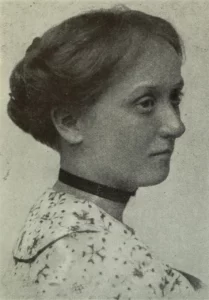
 Most people have played the game, Candy Land, but I would wager that few people know much about its origins. As a matter of fact, I wonder if other games had reasons for their creation that are vastly different than what anyone would expect. Candy Land (also known as Candyland) is a simple racing board game created by Eleanor Abbott and published by Milton Bradley in 1948. The game is suitable for young children, because it requires no reading and minimal counting skills. It also doesn’t require any strategy skills, because players are never required to make choices…simply following directions is all that is required. It seems that the game has never lost its appeal, because about one million copies are sold each year.
Most people have played the game, Candy Land, but I would wager that few people know much about its origins. As a matter of fact, I wonder if other games had reasons for their creation that are vastly different than what anyone would expect. Candy Land (also known as Candyland) is a simple racing board game created by Eleanor Abbott and published by Milton Bradley in 1948. The game is suitable for young children, because it requires no reading and minimal counting skills. It also doesn’t require any strategy skills, because players are never required to make choices…simply following directions is all that is required. It seems that the game has never lost its appeal, because about one million copies are sold each year.
For most adults, the game loses its appeal pretty early on, and we all assume that it’s because it is a game that is designed for kids. We figure that once we get a little older, we simply move on to more complicated games to find any interest in them at all. And maybe that is true, but even that idea doesn’t touch on the real “idea” behind the game.
The truth is that when she invented the game, Eleanor Abbott was recovering from polio in San Diego, California. She began to think of things that she and other recovering polio victims could do in their limited capacity. So, the game was made for and tested by the children in the same wards on the hospital. It was supposed to be a sort of occupational therapy game, but when they played it, the children suggested that Abbott submit the game to Milton Bradley Company. They knew that they enjoyed it, and thought all children would, not just those who had been ill with polio. Apparently, Milton Bradley agreed, because the bought it and first published it in 1949. It was intended to be a temporary fill-in for their, then main product line, school supplies. Surprisingly, Candy Land became Milton Bradley’s best-selling game, surpassing its previous top seller, Uncle Wiggily. It put Milton Bradley in the same league as its main competitor, Parker Brothers. It is said that 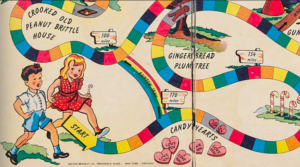
 the original art was designed by Abbott, but this is uncertain. The original purpose of the game was to give kids stuck in polio wards a way to vicariously move freely in the pursuit of delights. The original board featured a boy in a leg brace about to walk through starting gate of the game. Interesting!!
the original art was designed by Abbott, but this is uncertain. The original purpose of the game was to give kids stuck in polio wards a way to vicariously move freely in the pursuit of delights. The original board featured a boy in a leg brace about to walk through starting gate of the game. Interesting!!
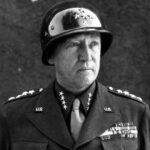
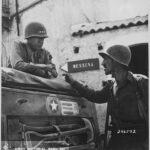 In any job, there can be personality conflicts, and Lieutenant General George S Patton was not liked by every other officer he served with. Nevertheless, like him or not, Lieutenant General George S Patton’s 3rd Army was successful is battle. On March 22, 1945, soldiers of the United States’ Third Army, under the command of Lieutenant General George S Patton, crossed the Rhine River at Oppenheim, south of Mainz. Patton’s arrival was weeks ahead of his rival, British Field Marshal Bernard Law Montgomery. When Patton went to battle, he was known to fight his own higher command structure nearly as hard as he did the Germans. His comments were often harsh and probably ruffled some feathers, but he was known to get the job done. He was also known for moving farther and more aggressively than ordered, and even having his troops pose as First Army soldiers in order to steal fuel from that unit’s stores in order to maintain their own advance to the east. By March 29, Patton had captured Frankfurt. Then Patton, commonly called “Old Blood and Guts” continued his march east.
In any job, there can be personality conflicts, and Lieutenant General George S Patton was not liked by every other officer he served with. Nevertheless, like him or not, Lieutenant General George S Patton’s 3rd Army was successful is battle. On March 22, 1945, soldiers of the United States’ Third Army, under the command of Lieutenant General George S Patton, crossed the Rhine River at Oppenheim, south of Mainz. Patton’s arrival was weeks ahead of his rival, British Field Marshal Bernard Law Montgomery. When Patton went to battle, he was known to fight his own higher command structure nearly as hard as he did the Germans. His comments were often harsh and probably ruffled some feathers, but he was known to get the job done. He was also known for moving farther and more aggressively than ordered, and even having his troops pose as First Army soldiers in order to steal fuel from that unit’s stores in order to maintain their own advance to the east. By March 29, Patton had captured Frankfurt. Then Patton, commonly called “Old Blood and Guts” continued his march east.
Frankfurt am Main, which means “On the Main” River, in western Germany, was the mid-19th century capital of Germany, until it was annexed by Prussia in 1866, in a move that ended its status as a free city, and thereby ending its reign as capital. When Germany was integrated into a united German nation, Frankfurt developed into a significant industrial city, making it a prime target for Allied bombing during the war. Bombing began in July of 1941, during a series of British air raids against the Nazis. By March of 1944, Frankfurt suffered major damage during a raid in which 27,000 tons of bombs were dropped on the nation in a single month. As a result, Frankfurt’s medieval Old Town was virtually destroyed.
Like him or not, Patton was a capable warrior. During the Battle of the Bulge, in December of 1944, General Patton broke through the German lines of the besieged Belgian city of Bastogne. The brave defenders of that city were so thankful for the assistance. Patton continued to push the Germans to the east, heading for his goal…to cross the Rhine. He was so determined that he didn’t care if he had to take down every single bridge along the route, in order to achieve his objective. Upon his arrival, Patton found one bridge…the Ludendorff Bridge, located in the little town of Remagen had not been destroyed. The American troops had already made a crossing on March 7, 1945, in a single great moment in the war and in history. Historically, no enemy army had crossed the Rhine since Napoleon accomplished the feat in 1805. Now there were two. The March 7th crossing and Patton’s grand crossing on March 22nd, and from the bridgehead created there, “Old Blood and Guts” and h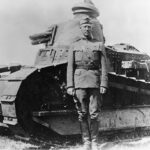
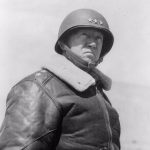 is 3rd Army headed east and captured Frankfurt on March 29, 1945.
is 3rd Army headed east and captured Frankfurt on March 29, 1945.
Still, Patton didn’t stop there. He crossed through southern Germany and into Czechoslovakia, at which point, he was given an order not to take Prague, the capital. It was to be saved for the Soviets to take. After all that, you might expect Patton to be furious, but uncharacteristically, he was not. Nevertheless, Patton desperately wanted to liberate Prague, probably for political, as well as personal reasons. Patton was a great warrior, but he was not above wanting the headlines.

 As is the case with many chemicals, Radium started out as a supposedly harmless chemical, that would later prove to be horrifically dangerous and even deadly. In the early 1920s, a company called U.S. Radium Corp was hiring girls to paint watch faces with radium. It was considered a “plum new gig” because the work was easy, and it paid well for the times. The purpose of painting the watch faces was to make them glow, which the chemical Radium did quite well. No one thought about exposure to Radium might do to the people doing this work. I’m sure it was like the exposure to lead in paint.
As is the case with many chemicals, Radium started out as a supposedly harmless chemical, that would later prove to be horrifically dangerous and even deadly. In the early 1920s, a company called U.S. Radium Corp was hiring girls to paint watch faces with radium. It was considered a “plum new gig” because the work was easy, and it paid well for the times. The purpose of painting the watch faces was to make them glow, which the chemical Radium did quite well. No one thought about exposure to Radium might do to the people doing this work. I’m sure it was like the exposure to lead in paint.
In the end, the easy work came at terrible price. As the girls worked on the watch faces, they licked their paint brushes in between watches. This was to give the brush a sharper point. Each time they did this, they swallowed a tiny bit of the chemical. I can’t say that I would be inclined to lick the tip of a paintbrush, but at that time, no one gave it a second thought. To them, it made sense to get the best point on their brush, and thereby, do the best job on the face of the watch.
At first, everything was going along well. The girls made good money, and the glow in the dark watches were a big hit. Still, as often happens with dangerous chemicals, the side effects began to present themselves in the form of horrifying health conditions. “There was one woman who the dentist went to pull a tooth and he pulled her entire jaw out when he did it,” explained Deborah Blum, author of The Poisoner’s Handbook. “Their legs broke underneath them. Their spines collapsed.” Unfortunately, many of the so-called Radium Girls died young, and U.S. Radium Corp tried to dodge responsibility.
The U.S. Radium Corp was founded in 1914 in New York City, by Dr Sabin Arnold von Sochocky and Dr George S Willis, as the Radium Luminous Material Corporation. In essence, the company produced uranium from carnotite ore. Eventually, they moved into the business of producing radioluminescent paint, and then to the application of that paint. As the business grew, they opened facilities in Newark, Jersey City, and Orange. In August 1921, in a hostile action, von Sochocky was forced from the presidency, and the company was renamed the United States Radium Corporation, Arthur Roeder became the president of the company. The company was 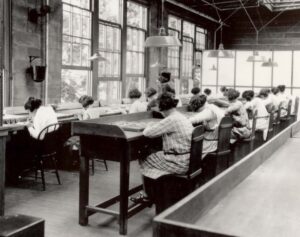
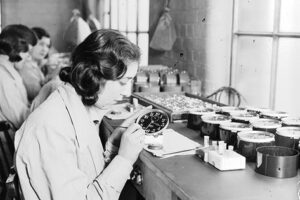 highly successful. In Orange, where radium was extracted from 1917 to 1926, the U.S. Radium facility processed half a ton of ore per day. The ore was obtained from “Undark mines” in Paradox Valley, Colorado and in Utah. Of course, these days, we know that uranium ore and most of its components are deadly, but back then, these innocent Radium Girls simply placed their trust in the wrong people, and it cost them their lives.
highly successful. In Orange, where radium was extracted from 1917 to 1926, the U.S. Radium facility processed half a ton of ore per day. The ore was obtained from “Undark mines” in Paradox Valley, Colorado and in Utah. Of course, these days, we know that uranium ore and most of its components are deadly, but back then, these innocent Radium Girls simply placed their trust in the wrong people, and it cost them their lives.
